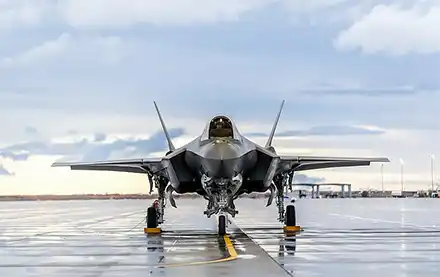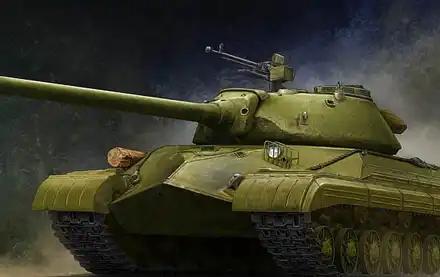




Cesare

The AJS-37 Viggen is a Swedish double-delta supersonic attack aircraft from the late Cold War. It was the backbone of the Swedish Air Force during the Cold War, serving as the main attack and anti-ship platform. The AJS is the 90’s upgrade of this 70's era aircraft, adding several advanced weapons and systems functionalities. The aircraft was designed around the pilot, with an excellent man-machine interface, supporting the pilot through the smart use of autopilot systems, radar and HUD symbology to deliver the ordnance onto targets from treetop level with high-speed attack runs.
The aircraft is armed with multiple weapon systems ranging from programmable stand-off weapons such as the RB-15F anti-ship missile to the BK90 Cluster munitions dispenser, and various bombs, rockets and missiles for a wide range of target types. The aircraft can also carry gun pods and the Sidewinder series of infrared-guided missiles for air defence and self-protection purposes.
It was the first canard design produced in quantity and arguably the most modern/advanced combat aircraft in Europe at the time of introduction, featuring an airborne digital central computer with integrated circuits for its avionics, the world's first of its kind, automating and taking over tasks previously requiring a navigator/copilot, facilitating handling in tactical situations where, among other things, high speeds and short decision times determined whether attacks would be successful or not, a system not surpassed until the introduction of the Panavia Tornado into operational service in 1981.
In the late 1970s, the all-weather interceptor/strike fighter JA 37 variant was introduced. In November 2005, the Viggen was retired from service by the Swedish Air Force, the only operator, having been replaced by the newer Saab JAS 39 Gripen.
Viggen name
Viggen is the definite form of the Swedish word vigg, which has two meanings. According to Saab, the aircraft's name alluded to both.
The first meaning refers to åskvigg, or "thunderbolt", inspired by the lightning strikes of the Norse god Thor when he hunted giants with his war hammer, Mjölnir. Vigg is also the Swedish name for the tufted duck, a small diving duck common in Sweden. In this sense, it serves as a reference to the aircraft's canard configuration, as "canard" is French for duck.
Development
Development of Saab 37 Viggen started as early as 1952, three years before its predecessor, the Saab 35 Draken even flew. Serial production started in 1970. The aircraft was constructed to handle temporary airfields on the Swedish road network, therefore it had small canard wings and a reversible jet engine. The versatile Viggen was used as a fighter, attack, reconnaissance and double seated trainer.
The Viggen was initially developed as an intended replacement for the Saab 32 Lansen in the attack role and later the Saab 35 Draken as a fighter. In 1955, as Saab's prototype Draken, the most aerodynamically advanced fighter in the world at that point, performed its first flight, the Swedish Air Force was already forming a series of requirements for the next generation of combat aircraft; due to the challenging nature of these requirements, a lengthy development time was anticipated, with the first flight intended to be no earlier than the middle of the next decade. Between 1952 and 1957, the first studies towards what would become the Viggen were carried out, involving the Finnish aircraft designer Aarne Lakomaa.
From the onset, the Viggen was planned as an integrated weapon system, to be operated in conjunction with the newest revision of Sweden's national electronic air defence system, STRIL-60. It was used as the nation's standard platform, capable of being efficiently adapted to perform all tactical mission roles. Other requirements included supersonic ability at low levels, Mach 2 performance at altitude, and the ability to make short landings at low angles of attack to avoid damaging improvised runways. The aircraft was also designed from the beginning to be easy to repair and service, even for personnel without much training.
Design
In the early 1960s while turbojets still filled the sky SAAB designers pursued a turbofan engine for their new multi-role fighter-attack-reconnaissance-interceptor. The type even had a maritime patrol variant. It was a broad mandate: The requirements for what became the Viggen dictated that the jet be capable of Mach two at high altitude and Mach 1 at sea level, all while possessing very good short takeoff and landing capabilities with good fuel efficiency at low and medium altitudes.
SAAB ended up with a license-built version of the Pratt & Whitney JT8D—the same engine flown on the 727 and DC-9 airliners—known locally as the Volvo RM8.
Saab settled on the distinctive delta wing and canard design to best address the flying performance stipulated by the Air Force. The canards made the high-speed flight at low altitudes smoother as well as guided the airflow over the main wings in such a way as to increase lift, improve low-speed stability and shorten take-off and landing distances. The Viggen was the world's first serial-produced aircraft to feature canards as a standard design aspect.
The first of the Viggens into service was the AJ 37, the strike fighter variant. From the same basic airframe, Saab also created the SH 37 which was optimized for maritime strike and reconnaissance. The non-radar equipped SF 37 reconnaissance version was also developed from the AJ 37.
The SH 37 retained the AJ 37’s radar and thus its ability to carry the full range of both guided and unguided weapons as well as a variety of camera and electronic gear in pods carried externally. By contrast, the SF 37 did away with the radar in favour of a camera and sensor package in the nose; consequently, the SF 37 did not possess the ability to carry and operate much of the AJ 37’s arsenal beyond infrared-guided air-to-air missiles for self-defence and unguided rocket pods.
Through the years, the AJ, SH and SF variants were subject to upgrades including a particularly extensive electronics upgrade in the early 90s. Aircraft upgraded in that program were re-designated as AJS, AJSH and AJSF versions.
The AJ 37 airframe was also used to create the two-seat SK 37 training aircraft. To make room for the second seat, the SK 37 had reduced internal fuel volume, electronics simplified and the radar removed. Late in the Viggen’s service career, ten SK 37s were refitted for electronic warfare training and designated SK 37E. The SK 37E was the last Viggen variant in active service when it was retired in 2007.
The late 1970s saw the development of the JA 37, the air-to-air specialist of the Viggen family. Created as an interceptor first and foremost, the JA 37 differed in many key ways from the earlier Viggen versions.
The JA 37 had a slightly lengthened fuselage which contained very modern avionics to replace the CK37 computer at the heart of earlier versions; it also featured the much more powerful RM8B engine. The extra power of the RM8B helped to create much different handling qualities between the JA version and earlier ones.
The JA version also featured a trio of large multi-function display screens in the cockpit; while this feature became standard in combat jets through the 80s and 90s, it was certainly not a common feature at the time the JA 37 debuted.
As with earlier versions, the JA was subject to a variety of upgrading programmes over the years that created the JA 37C, 37D and 37DI sub-variants.
Avionics:
Saab CK 37, Ericsson PS 37 X-band monopulse radar, Decca Type 72 Doppler navigation radar, Garrett AiResearch digital Central Air Data Computer, etc.
Engine:
1x 1 × Volvo RM 8B afterburning turbofan
Turbofan
Power:
28 110 pound-force
Max Cruise Speed:
1 205 knots
2 232 Km/h
Approach Speed (Vref):
119 knots
Travel range:
1 100 Nautical Miles
2 037 Kilometers
Fuel Economy:
0.48 nautical mile/gallon0 235 kilometres/litre
Service Ceiling:
60 000 feet
Rate of Climb:
40 026 feet/minute 203.33metre / second
Take Off Distance:
400 metre - 1,312.32 feet
Landing Distance:
450 metre - 1,476.36 feet